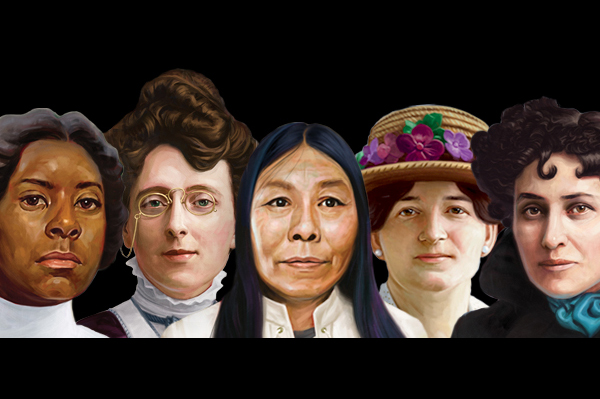Discover a wealth of interesting, entertaining and informative stories in each issue, delivered to you six times per year.
Canada’s Great Women for teachers and students

Canada’s History Society decided to mark the centennial of the first women to win the vote in Canada — in Manitoba, Saskatchewan and Alberta in 1916 — by celebrating great women from Canada’s past.
To create our list we recruited a panel of prominent Canadians — former Governor General Adrienne Clarkson; bestselling author Charlotte Gray; historians Michèle Dagenais (Université de Montreal), Tina Loo (University of British Columbia), and Joan Sangster (Trent University); and author and English professor Aritha van Herk (University of Calgary).
Theirs was not an easy task, for how do you define greatness? The list of thirty names the panel came up with is by no means definitive; some of the names are familiar, others are obscure. But what can be said is that each of the great women chosen has in some way made a positive impact on Canada.
Canada’s History Society would like to invite teachers and students to take on new perspectives and some other historical thinking concepts. Have students review our list of thirty women and then ask them to create their own version. Take the time with your class to listen to this interview with one of our judges, Charlotte Gray, about her experience in selecting these great women.
Classroom Activity
- Select a woman.
- Identify the major and minor influences in her life (social, political, economic and cultural) and show with primary and secondary source evidence how she responded to them.
- Pinpoint the turning point in her life.
- Why and how did her work impact the surrounding community and Canada?
- Take the perspective of the woman, how do you think she felt and thought about the work she was doing? Can you find evidence to support this?
- Was she fighting against an injustice? Research the injustice in Canada. Where are its roots? Who was supporting it? Who was fighting against it? Is it still an issue in Canada or communities within Canada today?
Extension Activity
- Place all thirty women on a timeline of Canadian history. (Students can also place women on a map of Canada to gain a better understanding of place).
- Identify major events in Canadian history that fall within the date range of these women.
- Using what they have learned about these events in Canadian history, discuss how these events may have influenced these women. Be sure to encourage students to take the perspectives of these women to better understand how they would have felt about these events.
- Use independent/group research projects to further students understanding.
- Hold a class debate to defend or criticize the women to decide who belongs in the top twenty, ten, five or one.
- Vote as a class.
- This activity can take place multiple times throughout the year as students learn new and different parts of Canadian history.





